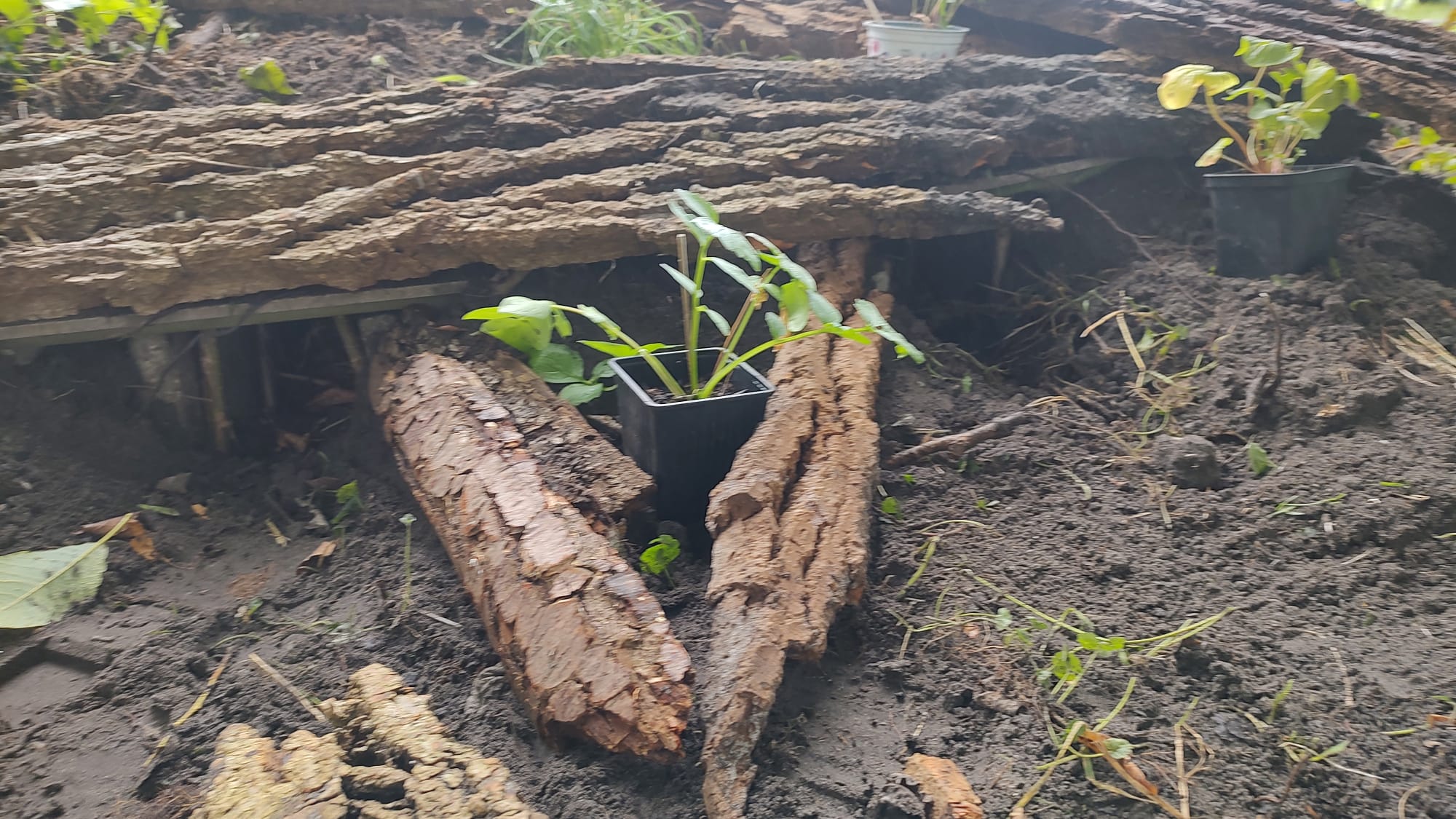
Full materials list & sourcing sustainably
The strength and safety of a Hedgehog Dome depend on the materials you choose. The right materials ensure that your Dome lasts for years, blends naturally into the environment, and protects hedgehogs without risk of toxins or collapse. This lesson provides a complete list of recommended materials and practical advice on sourcing them in a sustainable way.
Core materials
These form the main structure of the Dome:
- Bricks, stones, or reclaimed concrete blocks: for building stable nest chambers and tunnels.
- Normal garden soil or bark: used as insulation around and on top of the nest chambers, forming the natural “roof” under the sand layer.
- Small twigs, leaf litter & coarse sand: for drainage layers underneath each chamber.
- Topsoil: for covering the Dome and supporting planting on top.
- Logs or untreated wooden planks (optional): to reinforce tunnels or create structure where needed.
Planting layer
The planted dome top requires soil and native plants.
- Local topsoil mixed with compost: improves fertility for plants and helps stabilize the mound.
- Native plants or grasses: chosen according to your climate (wildflowers, mosses, ferns, sedums, or drought-resistant herbs).
- Mulch, bark, or leaf litter: extra cover for young plants and added protection for hedgehogs.
Optional extras
- Natural roofing felt or woven reed mats: as extra waterproofing in very wet climates (always placed above the bark/soil insulation, not directly inside chambers).
- Bricks with holes or hollow logs: to create insect habitats in the mound, adding natural food sources. Placed on the outside of the mound.
- Signage (for public domes): a small wooden sign to explain the project and prevent disturbance.
Sustainable sourcing tips
To keep your project eco-friendly and affordable, consider:
- Reclaimed and recycled materials: use leftover bricks, stones, or wood.
- Local sourcing: soil, gravel, bark, and plants from local suppliers reduce transport impact and suit your environment.
- Avoid treated wood or toxic materials: paints, varnishes, or pressure-treated timber can harm soil and wildlife.
- Choose native plants only: avoid invasive species and support local biodiversity.
Checklist for materials
✔ Bricks or stones (for chambers & tunnels)
✔ Normal soil or bark (for insulating & roofing nest chambers)
✔ Twigs, leaf litter & coarse sand (for drainage)
✔ Topsoil (for mound covering)
✔ Compost (for planting mix)
✔ Native plants (for camouflage & biodiversity)
✔ Logs/untreated wood (optional reinforcement)
✔ Leaf litter, bark, or mulch (protective cover)